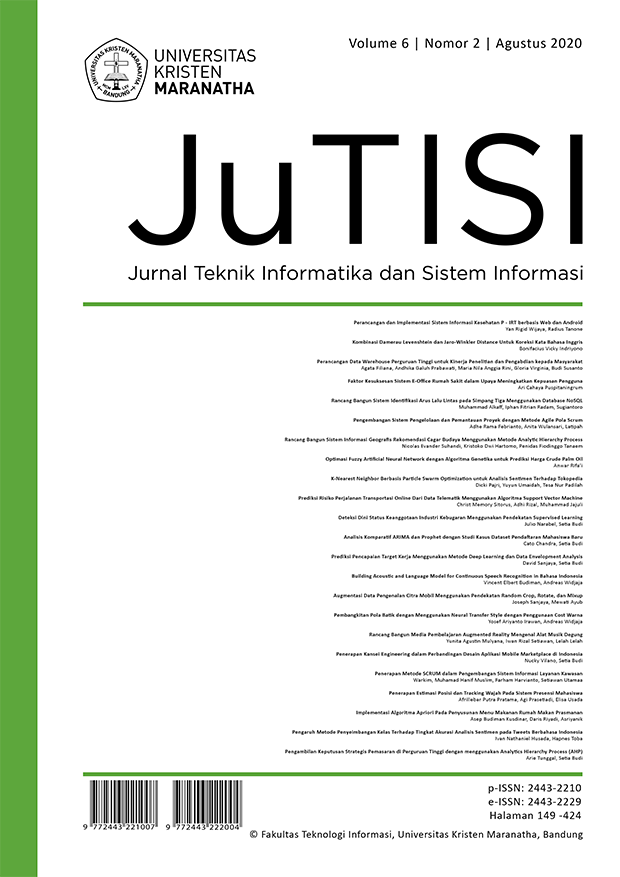Prediksi Risiko Perjalanan Transportasi Online Dari Data Telematik Menggunakan Algoritma Support Vector Machine
Main Article Content
Abstract
The ride-hailing service is now booming because it has been helped by internet technology, therefore many call this service online transportation. The magnitude of the potential for growth in online transportation service users also increases the risk of user satisfaction which could have declined therefore the company is increasing in its service. Both in terms of application and services provided by partners/drivers of the company. During each trip, the online transportation application will record device movement data and send it to the server. This data set is usually called telematic data. This telematics data if processed can have enormous benefits. In this study, an analysis will be conducted to predict the risk of online transportation trips using the Support Vector Machine (SVM) algorithm based on the obtained telematic data. The data obtained is telematic data so it must be processed first using feature engineering to obtain 51 features, then trained using the SVM algorithm with RBF kernel and modified C values. Every C value that is changed will be used K-Fold cross-validation first to separate the testing data and training data. The specified k value is 5. The results for each trial obtained accuracy, Receiver Operating Characteristic (ROC) and Area Under the Curves (AUC), for the best that is at C = 100 while the worst at C = 0.001.
Downloads
Download data is not yet available.
Article Details
How to Cite
[1]
C. M. Sitorus, A. Rizal, and M. Jajuli, “Prediksi Risiko Perjalanan Transportasi Online Dari Data Telematik Menggunakan Algoritma Support Vector Machine”, JuTISI, vol. 6, no. 2, Aug. 2020.
Section
Articles
This is an open-access article distributed under the terms of the Creative Commons Attribution-NonCommercial 4.0 International License (https://creativecommons.org/licenses/by-nc/4.0/) which permits unrestricted non-commercial used, distribution and reproduction in any medium.
This work is licensed under a Creative Commons Attribution-NonCommercial 4.0 International License.

